Learn to Read a Ruler in Inches
Rulers are an essential tool to have, but if yous're struggling with how to read a ruler, y'all're not lone. There are then many lines on a ruler, it tin can get disruptive to effigy out what they all mean. In this guide, we'll explain why you should know how to read a ruler and requite y'all pace-by-step instructions on how to read a ruler in inches and cm. We'll as well provide you with some helpful resource you tin utilise to keep honing your ruler-reading skills. Knowing how to read a ruler is important, not just for schoolhouse but also for daily life. For example, if you wanted to make something out of construction paper, you'd probable need to use a ruler to measure out out how much of the fabric you lot would need. Or what if you wanted to frame a photograph you have? In this instance, you might accept to measure the picture to encounter what kind of frame it would fit in. The truth is that there are tons of moments in life when yous'll demand to know how to read a ruler. And if you don't know how to read a ruler, then you lot'll likely endure some consequences. For instance, what if yous make two pieces of something that don't fit together because one is shorter or longer than it was supposed to be? Or what if you mess upwardly a science experiment considering you didn't accurately read the measurement of a slice of string you cut? Information technology's pretty obvious that knowing how to read a ruler is important to not simply your grades in school simply also your 24-hour interval-to-day life. There are two types of rulers y'all tin use: the inch, or imperial, ruler and the centimeter, or metric, ruler. Inches correspond to the imperial system, which is the chief measuring organisation used in the Us and a smattering of other countries. Meanwhile, centimeters are part of the metric system, which is used around the globe in both everyday life and science. While we will be providing pictures y'all tin use to follow our instructions, nosotros recommend getting out your own ruler or measuring tape so you lot tin can follow along in real fourth dimension. Let's commencement by looking at how to read a ruler in inches. If you're American, this is the measurement yous probably know better than centimeters, which are sometimes included on your standard 12-inch, or ane-foot, ruler (we'll go over how to read a ruler in cm in the next department). Here'due south a picture of an inch ruler: Correct away, you should be able to tell that this ruler uses inches, equally information technology's divided into 12 equally spaced areas (labeled i-12), and we know at that place are 12 inches in a pes (ignore the cm below). Now, observe the lines between each inch, with some longer and some shorter than others. Each of these tiny lines represents a fraction of an inch. In that location are five dissimilar lengths of lines in total. Each inch is divided into 16 lines, pregnant that the infinite between each line is 1/xvi inch long—this is the smallest length yous can measure with a ruler. (Note that some rulers just go down to 1/8 inch lines, whereas others get down to 1/32 inch lines.) The inch is the biggest unit on a ruler and is represented by the longest line. Each 1-inch line is labeled with a number indicating what inch information technology is on the ruler (as the image above shows). Example: If you were to measure out the length of a canvass of computer paper, the slice of paper would come upward to the eleven-inch marking on your ruler, indicating that it's exactly 11 inches long. The second-biggest unit of measurement on a ruler is the 1/2 inch, which is represented by the second-longest line. These typically aren't labeled but might be on some rulers (in which case you'd run into numbers such as 1 1/2 in, two 1/2 in, etc.). The ane/2-inch line is located midway between every inch on a ruler. The midpoint between seven and 8 inches, for instance, would be 7 1/2 (or seven.v) inches. Case: If you were to measure the width (instead of length) of a piece of computer paper, the slice should come up exactly to the ane/2 inch line between eight and 9 inches, indicating that the width is 8 1/2 (eight.v) inches. The third-biggest lines on a ruler are the 1/iv inch lines, which appear midway between the 1/2 inch and whole inch lines: If you counted in i/4 inches on a ruler, you'd see that the fourth line after 0 inches equals ane/four inch, the eighth line equals 2/four (one/2) inch, and the 12th line equals 3/4 inch. Case: Say you're measuring a piece of material and the ruler ends at the quaternary line afterwards the 10-inch mark. This would mean that the cloth is x 1/4 (ten.25) inches long. Next is ane/8 inch, which is the second-smallest unit of a ruler. The 1/eight lines are constitute midway between each ane/4-inch line: If you counted in 1/8-inch increments, you'd detect that the second line afterward 0 equals i/8 inch, the 4th line two/8 (1/4) inch, the 6th line 3/8 inch, the eighth line 4/eight (2/iv or i/2) inch, the 10th line v/8 inch, the twelfth line six/eight (3/4) inch, and the 14th line 7/eight inch. Example: Say you decide to measure the length of a corn on the cob. You find that your ruler comes to the second line afterward the vi-inch mark. This would mean that the corn is half dozen one/8 inches long. Finally, the smallest unit on a ruler is one/sixteen inch.These tiny lines that represent ane/16 inch come up between all 1/8-inch lines: Instance: You're trying to mensurate the length of your arrow finger. The ruler comes to the seventh line past 3 inches. This would mean that your finger is three 7/16 inches long. Answers Now that we've looked at how to read a ruler in inches, allow's go over how to read a ruler in cm. This is especially important to know if you're studying scientific discipline (retrieve that science generally uses the metric organisation—not the purple system). Knowing how to read a ruler in cm is as well helpful for people who'd prefer to not work with fractions (which yous must do with inches) and who'd similar to piece of work with other units instead (in this instance, millimeters). The standard metric ruler is 30 cm long. Each centimeter is labeled with a number to bear witness the measurement information technology's referring to. You lot might meet inches on the other side of your metric ruler. In this example, refer to the instructions above to learn how to read a ruler in inches. Also, be aware that xxx cm does not directly equal 12 inches, even though they are oftentimes put on the aforementioned ruler! Now and then, here's what a typical metric ruler looks like: You can tell that this is a metric ruler because information technology's divided into xxx as spaced sections and has "cm" written on information technology(ignore the inches below). Like the inches ruler, you lot'll run into tons of lines on a metric ruler, with some longer and some shorter. Each line represents 1 millimeter, which is equal to 1/10 or 0.1 cm (so 10 mm make up 1 cm). In that location volition e'er exist 10 lines from one centimeter to the next centimeter. In total, there are three different lengths of lines on a metric ruler. The longest line represents the biggest unit on the ruler: 1 cm. Each centimeter is labeled on the ruler (ane-30). Example: You take out a ruler to measure the width of your fingernail. The ruler stops at 1 cm, meaning that your nail is precisely 1 cm wide. The eye-length line on a metric ruler is the 1/2 (0.five) centimeter line, which comes midway between every centimeter (in other words, it's the fifth line subsequently every whole centimeter): So if you counted five lines from ix cm, for instance, y'all'd get 9.5 cm (or 95 mm). Example: Say you're measuring the width of your smartphone, and it comes upwards to the fifth line after 4 cm on your ruler. This would hateful that the phone is 4.five cm (45 mm) wide. The smallest unit a metric ruler can measure is 1 mm, or 0.one cm. These are the smallest lines on the ruler, that is, the ones that come up between the whole centimeter and ane/ii centimeters: Example: You're measuring the length of a strand of hair. The strand comes to the ninth line later on sixteen cm on the ruler. This would mean the strand is xvi.ix cm long (that's sixteen cm + 9 mm). Answers If you want whatever extra assistance with learning how to read a ruler in cm or inches, videos and worksheets tin be excellent resources. Here are two piece of cake-to-follow videos to farther assistance you learn how to read a ruler: How to Read a Ruler in Inches How to Read a Ruler in cm If you'd rather exam out your ruler-reading noesis with do questions, then it'southward a great idea to download complimentary measurement worksheets from these math sites: All of these resource, in addition to the handful of practice questions we gave you in a higher place, should exist enough to get y'all reading a ruler in no fourth dimension at all! Got questions virtually decimals and fractions?Our practiced guides will teach you how to convert decimals to fractions and how to add and subtract fractions. Metric rulers usually have simply centimeters and millimeters on them. But did yous know there'due south an fifty-fifty tinier unit of measurement called nanometers? Learn how to convert nanometers to meters and other measurements with our in-depth guide. Ever seen Roman numerals but didn't know how to read them? Cheque out our detailed guide and you'll be on your style to understanding this ancient numerical organisation!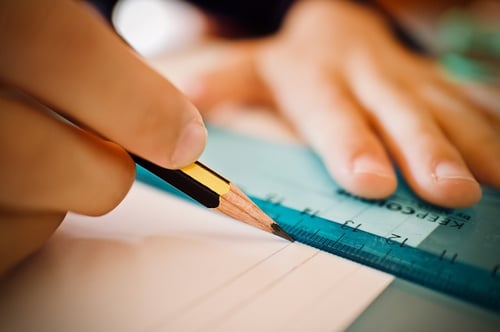
Why Yous Should Know How to Read a Ruler
How to Read a Ruler: Imperial vs Metric
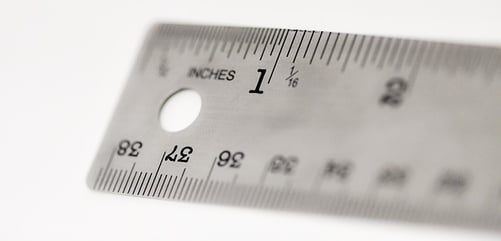
How to Read a Ruler in Inches


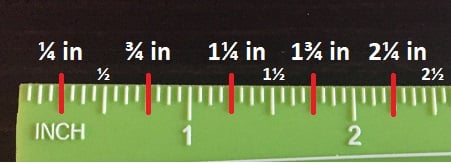
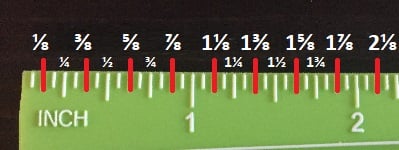
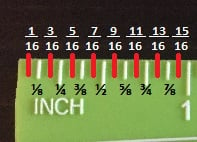
Inch Ruler Practise Questions

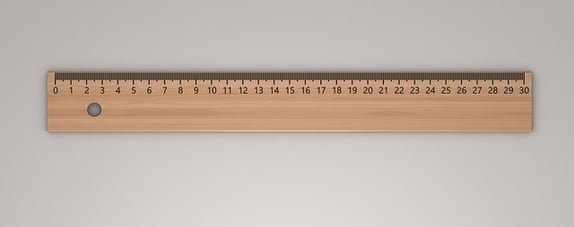
How to Read a Ruler in Centimeters


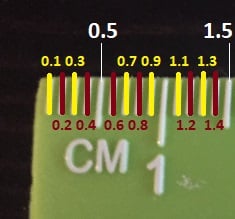
Centimeter Ruler Do Questions

half dozen Additional Resources for Learning to Read a Ruler
What's Adjacent?

Most the Author
Hannah received her MA in Japanese Studies from the University of Michigan and holds a available's degree from the University of Southern California. From 2013 to 2015, she taught English in Japan via the JET Program. She is passionate about education, writing, and travel.
Source: https://blog.prepscholar.com/how-to-read-a-ruler-inches-cm
Belum ada Komentar untuk "Learn to Read a Ruler in Inches"
Posting Komentar